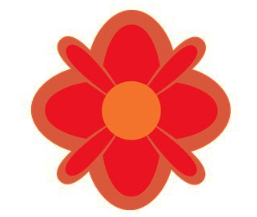Mindfulness Series: The Subtle Power of Non-Reactivity, By Erin Graves, ASW
We are living in a society of reactivity and over-reaction. We react when we receive a text or an email that rubs us the wrong way and immediately send back a snarky response. We react when a car pulls in front of us in traffic and we honk the horn, yell or worse. We react to our partner or child when they make a mess with impatience or judgment. We react to world events on Twitter and read the reactive “Twitterstorms” that abound from our own president.
When my stepson was in elementary school my husband, dog and I would often walk him to school in the morning. On our walk one morning a car did not come to a full stop at a stop sign as our family was about to cross the street. My husband reacted instinctually and yelled at the driver to stop at the stop sign and slow down. The driver of the car in turn reacted and actually turned his car around yelling expletives at our family. Luckily my husband did not react to the driver’s reaction and he drove away without incident. That event left an impression on all of us.
Often we tend to react and then regret. We regret how fast we sent that text and wish we could take it back. We regret honking at that harmless driver. We regret the way we have reacted to our loved one. We regret spending so much time on social media and getting so upset by events that are often out of our control. We may even notice, as my husband did, that his reaction set off a negative chain reaction that he did not anticipate.
When we regret our habitual over-reactions it is helpful to know there is a simple alternative… take a PAUSE before reacting and transform your habitual reaction to a more conscious response. One of my favorite quotes by Viktor Frankl sums up this simple shift:
“Between stimulus and response there is a space. In that space is our power to choose our response. In our response lies our growth and our freedom.”
Frankl was an Austrian neurologist, psychiatrist and Holocaust survivor who was a prolific writer about finding meaning in difficult times.
Often in difficult or challenging situations we don’t recognize that we do indeed have a choice on how we respond. We may have no control over the outer circumstances, but we can always control our own response to those circumstances.
The “space” that Frankl refers to can be compared to building in a “pause” as described in mindfulness practice. Building in this “pause” to promote a conscious response is a simple concept but not always easy. As with most new behaviors or skills it takes practice. With regular practice you may notice as your ability to respond more consciously increases, your need to instantly react (and the feelings of regret and guilt you inevitably experience) may decrease.
Invitation to Practice
1. Select a simple example of your own habitual reactivity where you tend to feel mildly irritated, annoyed, impatient, anxious, avoidant or stuck (Examples may include: driving in traffic, using social media, responding to texts or emails, interacting with co-workers or loved ones)
2. The next time you find yourself in that particular situation notice your inner experience and mentally label what emotion you are feeling (irritated, anxious…) and where you notice that sensation in your physical body (tightness in throat, shallow breathing, clenched fists…)
3. Allow yourself to PAUSE and count to five before responding to the given situation.
4. After responding again notice your inner experience and mentally label what emotion you are feeling and where you notice that sensation in your physical body
5. Repeat and practice as often as you feel reactivity.
The practice is in the PAUSE and the CONSCIOUS RESPONSE. You may still choose to respond with irritation, but recognize that is a choice. The point of the practice is not to judge what your response or reaction may be, but to invite the opportunity for conscious choice making.
Next Steps
With practice of all this conscious choice making, you may realize the power you have to CONSCIOUSLY RESPOND WITH KINDNESS.
As I shared the topic of my blog with my husband he reported how the incident with the driver at the stop sign has really changed how he responds to various situations. Instead of reacting as he used to, he now makes an effort to respond with kindness whenever possible. He has even slowed down his own driving speed and often allows other drivers to merge into his lane with a smile and a wave. He remarks on how good it feels to be kind to others. This is a lesson that does not go unnoticed by my stepson.
We all have the power to control our conscious responses and act with kindness. Now a chain-reaction of kindness is what our reactive society is sorely in need of these days…
This is the first in a series of mindfulness blog articles by therapist and meditation instructor Erin Graves, MSW, ASW 60986. For more information on mindfulness meditation or therapy with Erin please call: 619-272-6858x705; or email: erin@anxietytraumatherapy.com

